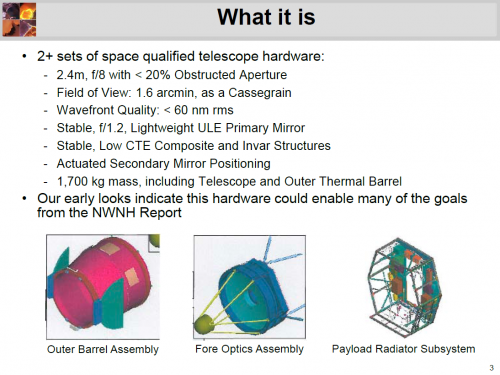The NRO's gift to NASA of unused spy satellites could enable a new project termed MOST, or Mars-Orbiting Space Telescope.
...
As it's currently envisioned, MOST would have three main science instruments — an imaging spectral mapper, a high-resolution imager and an ultraviolet spectrometer — allowing it to make a broad range of detailed observations.
The mapper would have a spatial resolution of 0.7 feet (0.21 m) per pixel at an orbiting altitude of 250 miles (400 kilometers), McEwen said. That's about 100 times better than the resolution achieved by a similar instrument aboard NASA's Mars Reconnaissance Orbiter (MRO), which has been circling the Red Planet since 2006.
...
MOST's imaging instrument would be able to photograph small areas with a resolution of 3.1 inches (8 centimeters) per pixel — about four times better than MRO's HiRise instrument (which McEwen leads as principal investigator).
...
Looking beyond Mars
MOST would also be built to look up and out, beyond the Red Planet and its two tiny moons.
The telescope's UV spectrometer is envisioned to be similar to that of the Hubble Space Telescope. But MOST likely wouldn't be able to study extremely distant objects as well as the famous HST, because installing a Hubble-like guidance and navigation system that allows a prolonged lock on such faint targets would raise the price tag significantly, McEwen said.
Instead, MOST may be optimized to view planets and moons in the outer solar system.
"We decided to emphasize bright targets, so mostly solar system targets — monitoring Jupiter, Saturn, Uranus, Neptune atmospheres, monitoring volcanism on [Jupiter's moon] Io and cloud patterns on [Saturn's moon] Titan," McEwen said. "There's an interesting variety of things you could do in planetary science with it."


